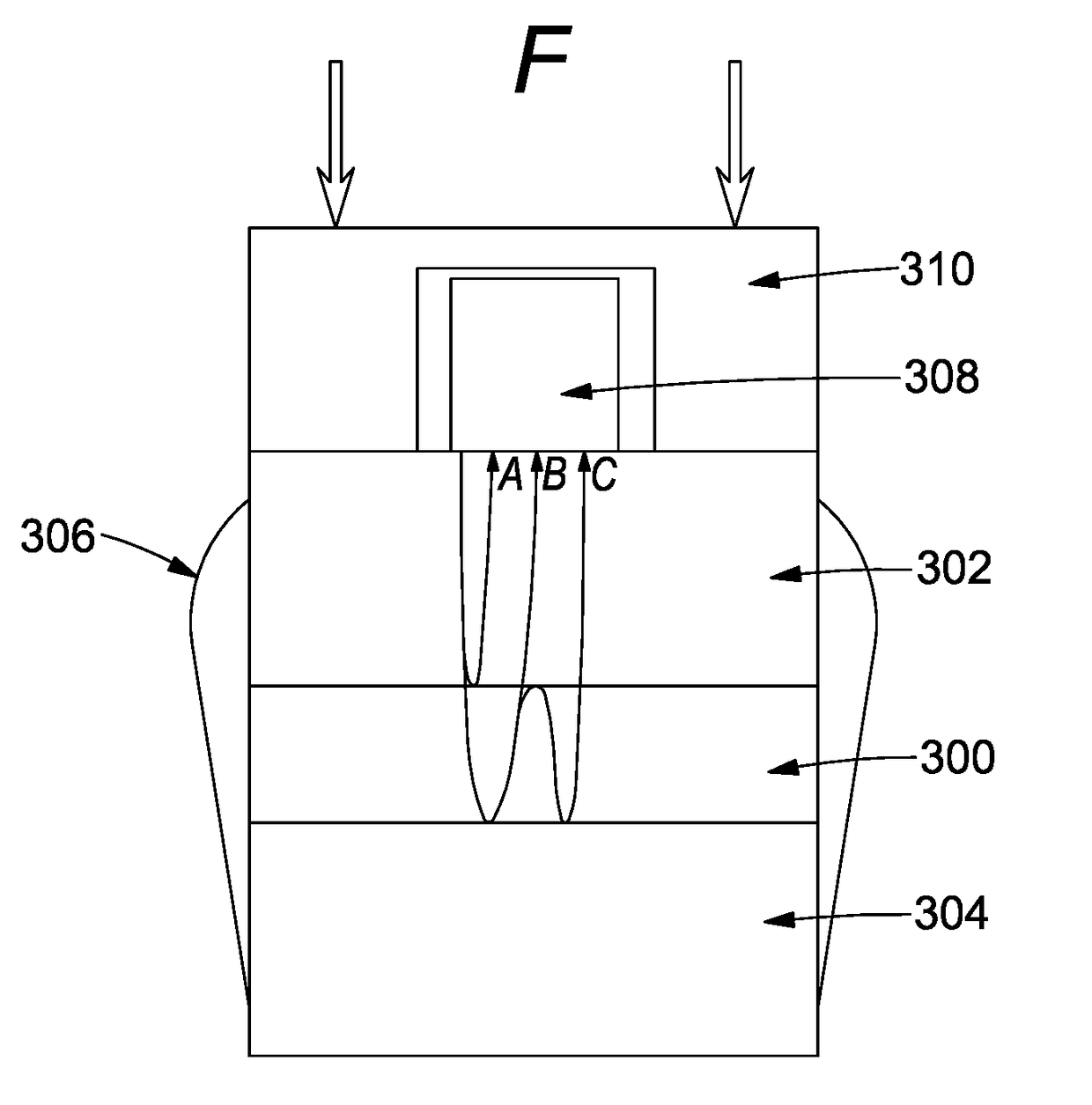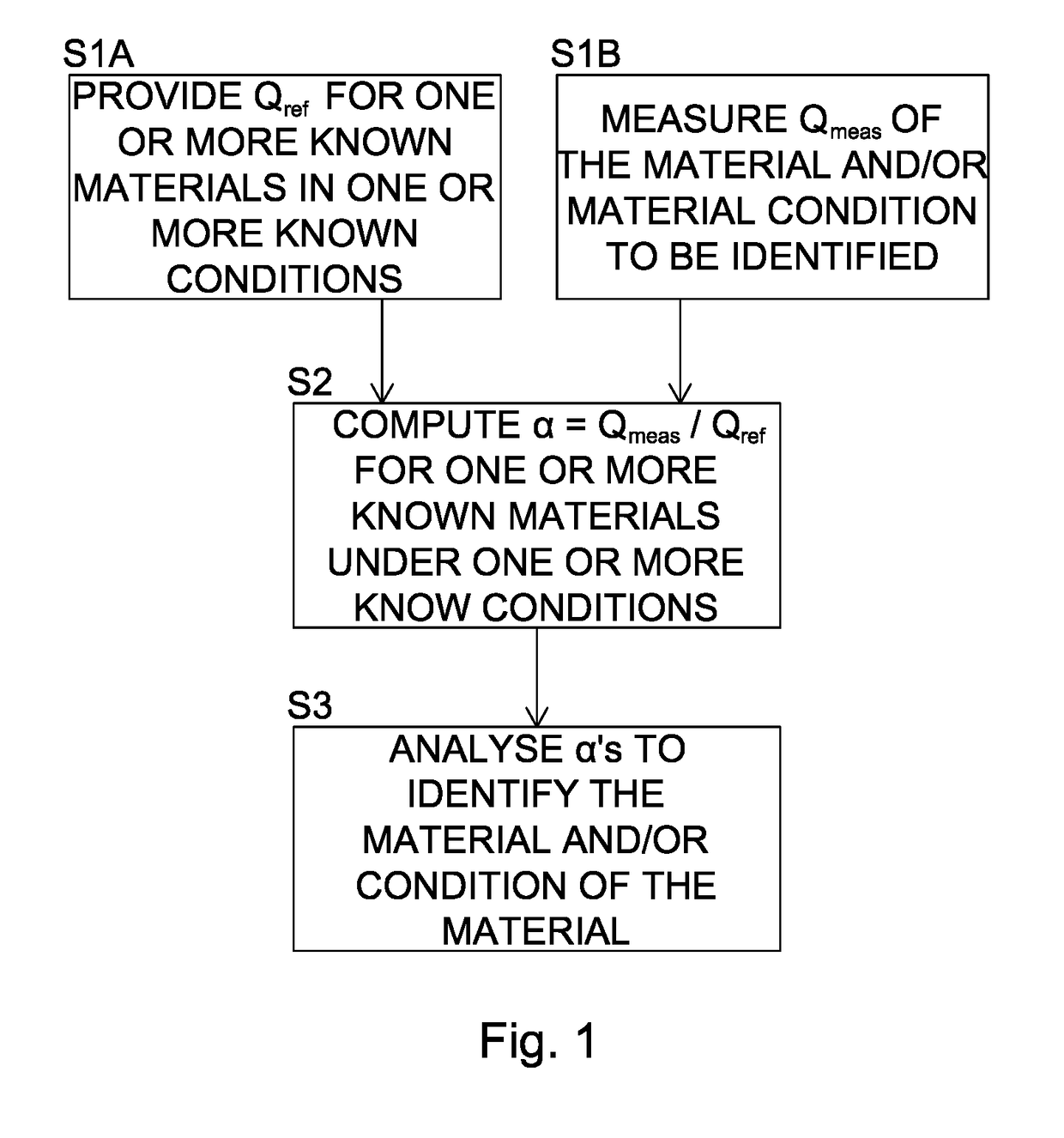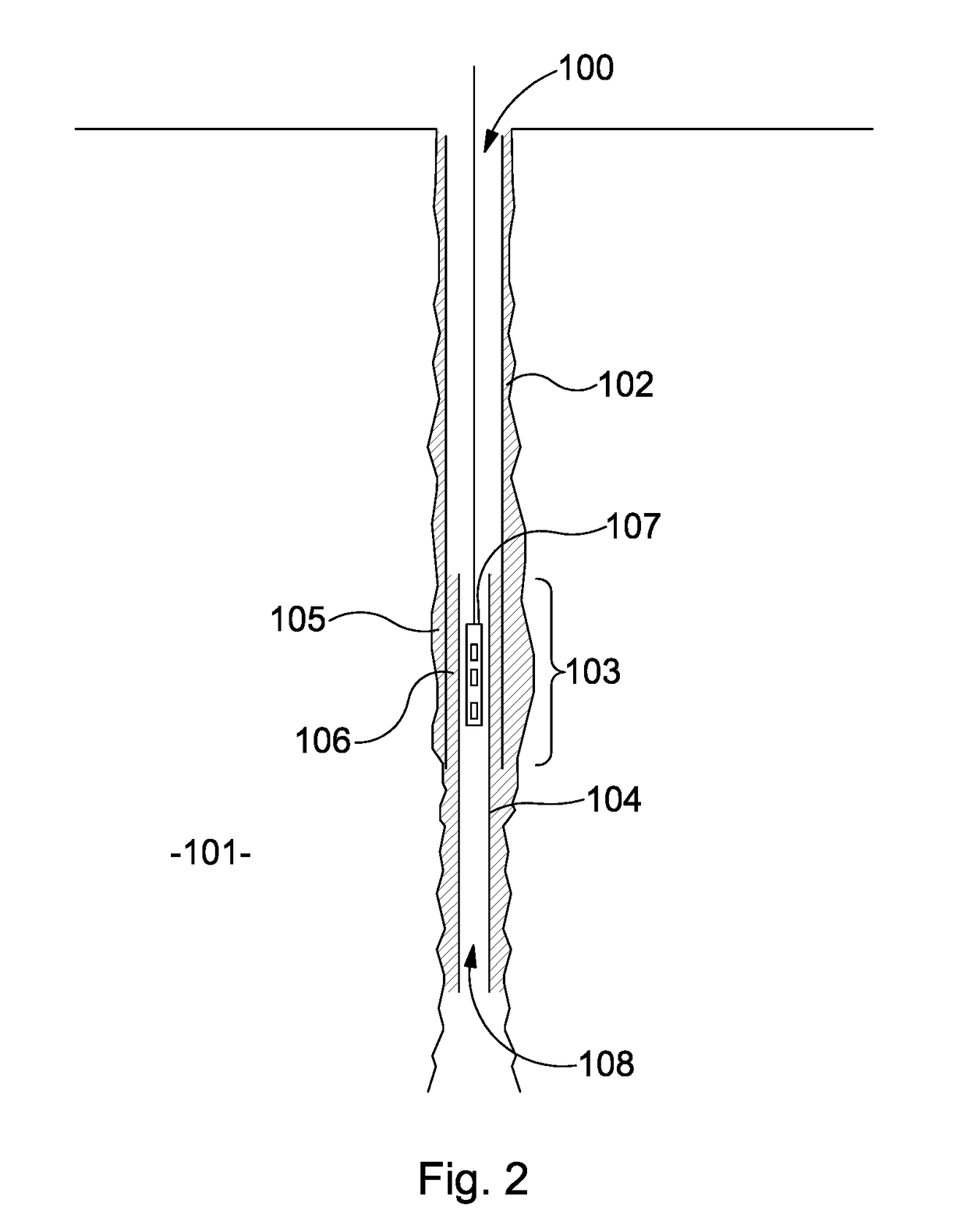A method of identifying a material and/or condition of a material in a borehole
a technology of material and condition, which is applied in the field of surveying of boreholes, can solve the problems of largely qualitative measurement, the annular spaces surrounding the casings may not be completely or perfectly filled, and the pressure control in the borehole is difficult to achieve, so as to reduce the cost of plugging and abandoning operations and reduce the cost of casing recovery
- Summary
- Abstract
- Description
- Claims
- Application Information
AI Technical Summary
Benefits of technology
Problems solved by technology
Method used
Image
Examples
Embodiment Construction
[0074]FIG. 1 shows a flow chart of a method of identifying a material and / or condition of a material in a borehole in accordance with a first embodiment of the invention. The method comprises the following process steps S1A to S3 (numbered correspondingly in the FIG. 1):
[0075]S1A. Provide a reference quality factor (Qreference) for one or more known materials in one or more known conditions.
[0076]S1B. Measure a downhole quality factor (Qmeasured) of the material and / or material condition to be identified.
[0077]It should be noted that steps S1A and S1B need not be performed in a particular order (for example, SIB could be performed before S1A). However, it is more likely that S1A will be performed first and Qreference stored in a computer memory or database.
[0078]S2. Compute a spectral ratio α=(Qmeasured / Qreference) for one or more known materials under one or more known conditions.
[0079]S3. Analyse the spectral ratios to identify the material and / or condition of the material in the ...
PUM
 Login to View More
Login to View More Abstract
Description
Claims
Application Information
 Login to View More
Login to View More - R&D
- Intellectual Property
- Life Sciences
- Materials
- Tech Scout
- Unparalleled Data Quality
- Higher Quality Content
- 60% Fewer Hallucinations
Browse by: Latest US Patents, China's latest patents, Technical Efficacy Thesaurus, Application Domain, Technology Topic, Popular Technical Reports.
© 2025 PatSnap. All rights reserved.Legal|Privacy policy|Modern Slavery Act Transparency Statement|Sitemap|About US| Contact US: help@patsnap.com



